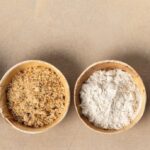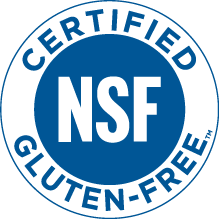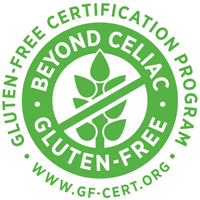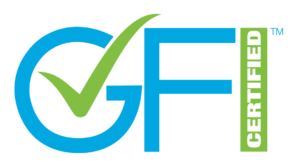
The Benefits of At-Home Genetic Testing For Celiac Disease
At-home genetic testing for celiac disease is a groundbreaking innovation helping people to determine their
If you’re new to the gluten-free diet – or have been on a gluten-free diet for a while now, you need to understand what “gluten-free” actually means and how to read food labels. The word “free” in “gluten-free” doesn’t actually mean that there is absolutely no gluten in the food that you are consuming. Gluten-free suggests an acceptable level of gluten determined by the Food and Drug Administration (FDA). According to the gluten-free food labeling rule, when a manufacturer decides to put a “gluten-free” label on its food packaging, it must comply with the FDA’s definition of less than 20 parts per million (ppm) or less of gluten. But don’t be alarmed when you do not see this label on all naturally gluten-free foods like water or fresh fruits. There is no requirement that gluten-free foods must be labeled “gluten-free.”
Covered:
Not Covered:
There is no standard symbol for gluten-free foods. There are several third party organizations that offer a gluten-free certification, each with their own tests and acceptable gluten levels. The symbols below are some of the most recognized symbols on gluten-free products and will be the easiest to spot at your grocery store – especially when you’re a gluten-free “newbie.”

Certified by the Gluten-Free Certification Organization (GFCO).
To receive this label, food products must have 10 ppm of gluten or less. The GFCO recently introduced a new certification mark, so be on the lookout for both!

Certified by the National Sanitation Foundation (NSF)
To use this mark on products, food must have 20 ppm of gluten or less.

Beyond Celiac Gluten-Free Certification Program
Certified by Beyond Celiac
Food products must contain 20 ppm of gluten or less.

Certified by the National Celiac Association
This is a tough one for manufacturers! Food products must contain 5 ppm of gluten or less to use this mark on their packaging.
Also be on the lookout for any food labels printed with “gluten-free,” “no gluten,” “free of gluten,” and “without gluten” anywhere on the product’s package. The FDA also requires any products with these printed words to adhere to the gluten-free food labeling rule of 20 ppm of gluten or less.
It is still important to read the back of all food labels, especially if you’re not sure if you can eat the product or not. Be on the lookout for allergy warnings on food labels like “CONTAINS WHEAT” in bold letters.

You also want to know where gluten is hidden in foods. It can be tricky to identify gluten, especially when labels do not just say “gluten,” “wheat,” or “barely.” There are also common alternative Latin terms for gluten like:
Ingredients that always contain gluten include:
Additionally, these ingredients may contain gluten depending on the source:
It’s important to get familiar with all of the ingredients listed above, and if you are still not sure, you may want to check with the manufacturer.This list of ingredients that contain gluten can seem daunting, especially if you are just starting a gluten-free diet. The easiest way to start is by sticking to meats, seafood, fresh vegetables and fruit, and nuts and seeds. Take this list with you next time you go grocery shopping as a guide and remember that this is not a race, but a journey.

At-home genetic testing for celiac disease is a groundbreaking innovation helping people to determine their

Virtually everyone prefers a simple cheek swab to an invasive blood test but that’s not

GlutenID® testing was featured in a recent article published by the College of American Pathologists